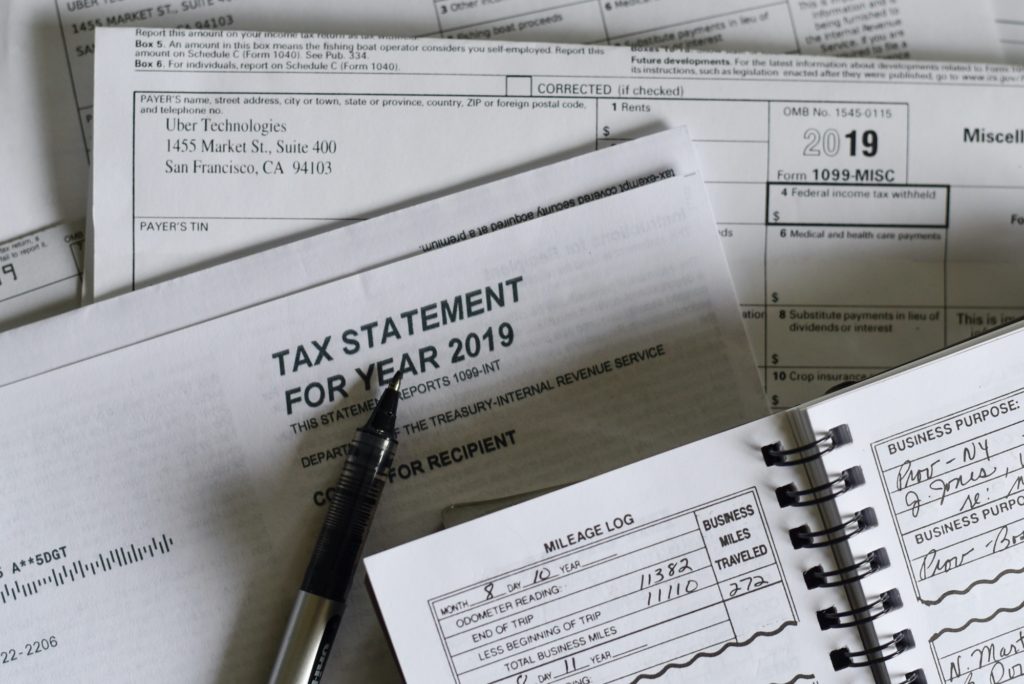As published on Zoe Financial with some minor changes.
Taxes can be a big drain on your wealth if you don’t properly prepare for them. Many of us expect our taxes to decrease in retirement. Believe it or not, they can increase. Many retirees think their tax bill will be lower post-retirement because they are no longer earning a salary. During retirement, most folks live primarily on what they’ve accumulated during their careers. The assumption is that lower wages equate to lower taxes. While that might be true for a short time frame, the window on lower taxes in retirement can shut quickly. Developing tax-efficient retirement withdrawal strategies can help you avoid draining your wealth.
If you have saved diligently for retirement, once required minimum distributions (RMDs) start – age 72 for IRA, 401(k), 403(b), etc. – your income could rise substantially. If you combine your RMDs with income from investments, social security, pensions, and other assets, your tax bracket in retirement could be the same as it was during your working years. It could be higher, too.
When Does the IRS Begin Claiming Taxes on Your Retirement Income?
Most retirement income is held in pre-tax savings accounts – 401(k), IRA, 403(b), etc. Since the savings are pre-tax, the IRS has not yet taxed these amounts. In some cases, the IRS has waited for decades to tax this income. Once you start withdrawals from these accounts, the IRS claims its share.
What If Tax Rates Increase?
The Tax Cut and Jobs Act (TCJA) passed in December 2017 resulting in lower tax rates. But these rates only apply until the end of 2025. Beginning on January 1, 2026, taxes will return to their previous, higher levels.
There’s more to think about than a return to the pre-TCJA tax regime though. Even before COVID-19 arrived on the scene, the US had a staggering amount of debt. The pandemic has led to massive amounts of government stimulus. That means our country’s debt levels are markedly higher. It’s not unreasonable to think rates could rise in the future.
Some proactive tax planning now when rates are low could pay off big.
How Are Different Retirement Accounts Taxed?
It’s important to remember that different accounts are taxed in different ways. For example, consider your investment accounts. If you hold investments in a taxable brokerage account, you pay taxes on your capital gains.
Taxable Accounts
The tax rate paid on capital gains resulting from the sale of assets held in a brokerage account for more than a year is currently lower than the tax rate on ordinary income. The same applies to dividend income. A married couple does not pay tax on long-term capital gains if their taxable income is $80,000 or less. This rate increases to 15% for income from $80,001 to $496,600. Above that level, the tax rate is 20%.
IRAs
If your investments are held in an IRA, you get a tax break when you contribute money to the account. You also don’t pay taxes on your gains when you recognize them. BUT when you withdraw money, you pay taxes based on the ordinary income tax brackets.
Roth IRAs
If your investments are held in a Roth IRA, you put after-tax dollars into the account. You don’t pay taxes on any gains and you don’t pay taxes when you take qualified distributions from the account.
Diversify Your Account Types
Conventional wisdom suggests your financial resources should be held in three distinct buckets:
- Taxable accounts – Individual and joint accounts as well as revocable trusts. Income from your investments is taxed in the year you earn it. You pay taxes on dividends in the year received. You pay capital gains taxes on sales based on the difference between your purchase price and your sales price.
- Tax-deferred retirement accounts (TDRAs) – 401(k) plans, 403(b) plans, 457 plans, IRAs, and Thrift Savings Plans (TSPs). You don’t owe any tax until you withdraw funds. You pay full income tax in the year of withdrawal.
- Tax-free accounts – Roth IRAs, Roth 401(k) plans, Health Savings Accounts (HSAs). Subject to certain restrictions, you pay no taxes when you withdraw funds.
The Conventional Wisdom on Retirement Withdrawal Strategies
The conventional view says to withdraw from your accounts in the following order:
- Taxable accounts
- Tax-deferred accounts
- Roth assets
This approach provides more time for your tax-advantaged accounts to grow tax-deferred. The downside – you will report more taxable income in some years than others. Your tax rate depends on how much income you report. You could pay more in taxes in your high-income years than you anticipated.
5 Tax-Savvy Retirement Withdrawal Strategies
1. Withdraw Proportionally
Withdrawing proportionally is often challenging and may require support from an expert financial advisor. You’ll want to take money from your accounts each year based on each account’s percentage of your overall savings. This approach works best when your retirement income is relatively uniform from one year to the next. It can also help you pay lower taxes on Social Security benefits and reduce Medicare premiums.
2. Take full advantage of income subject to low (or even zero) tax rates.
As noted above, you can potentially pay zero taxes on capital gains. If you can do so, you should. If you are older than 59 ½, meaning you don’t have to pay penalties on withdrawals from your TDRAs, consider withdrawing money from your retirement accounts when your tax rates are low. In addition to Roth conversions (see #4), you can also deposit such money in your brokerage account. Future sales will be taxed at the lower capital gains rate.
There is another advantage to saving some money in a taxable brokerage account. When you die, the cost basis of the assets that pass to your beneficiaries gets stepped up to the value of the asset on your date of death. This can reduce the tax cost of future asset sales. It can also lead to big tax savings for your beneficiaries.
3. Bracket Filling
Your income can fluctuate from year-to-year. You may find yourself in a lower tax bracket in a given year. You might expect to be in a higher bracket in a future year. For example, when you stop working you only withdraw what you need from your retirement accounts. When you reach 72 and RMDs kick in, you might have to increase your annual withdrawals. That could put you in a higher tax bracket.
Consider Roth conversions (see #4) in your lower-income years. That can help you lower the size of your RMDs. It can also increase the amount of tax-free income you can withdraw in a future year if the unexpected happens and you need more money.
4. Roth Conversions
If you have sizable balances in your tax-deferred retirement accounts (TDRAs), you must start taking your RMDs at age 72. Significant annual tax liabilities can result. Lowering your RMDs can reduce your taxable income. It can also decrease the tax liability on your Social Security benefits and reduce your Medicare premiums. Importantly, Roth conversions lower the market value of your TDRAs meaning your RMDs should be lower in the future. Roth conversions have become an attractive option due to today’s lower tax rates. You should balance the taxes you pay on a Roth conversion today against what you might pay in the future.
Your beneficiaries can realize another advantage from Roth conversions. After you pass, your beneficiaries can withdraw money from your Roth IRAs without paying the tax that comes with inherited IRAs. Your beneficiaries still only have 10 years to withdraw the funds, but they can let them grow tax-free for as long as they like. They also don’t have to worry about paying taxes when they withdraw the funds. If they inherit conventional IRAs, they will have to pay taxes as they withdraw money from the account.
If a couple is married and one spouse passes before the other, typically, assets held in TDRAs pass first to the surviving spouse. That spouse’s filing status will change from married to single. A higher tax bill could easily result from a change in filing status.
5. Qualified Charitable Deductions (QCDs)
If you are charitably inclined and are at least 70 ½, QCDs could make sense. QCDs can be taken from a traditional IRA. Up to $100,000 can be contributed to a qualified charitable organization annually.
What’s the benefit? The QCDs are not subject to federal income taxes. Yes, you can’t take a charitable deduction even if you can itemize. That should not be a concern. QCDs are not included in your taxable income either. Note that even though the SECURE Act raised the age for starting RMDs to 72 as of January 1, 2020, the age for taking a QCD was left at 70 ½. Even if a QCD does not yet offset an RMD, it still provides a tax-free way you can use IRA funds for a charitable contribution and reduce the amount of your TDRAs subject to RMDs in future years.
As retirement approaches, keep the following in mind:
- Taxes can be complicated, consulting with a financial advisor or tax planner can help put your mind at ease while implementing these strategies.
- Roth conversions can have additional benefits for the beneficiaries of your estate as well.
- RMDs can significantly reduce your flexibility to manage taxes after age 72, so developing a plan well in advance of that milestone can help.
The combination of planning and holding a variety of accounts in your portfolio can help you save on taxes and better sustain your retirement lifestyle.
Still have questions? Schedule a free 15-minute call.
For firm disclosures, see here: https://apprisewealth.com/disclosures/





